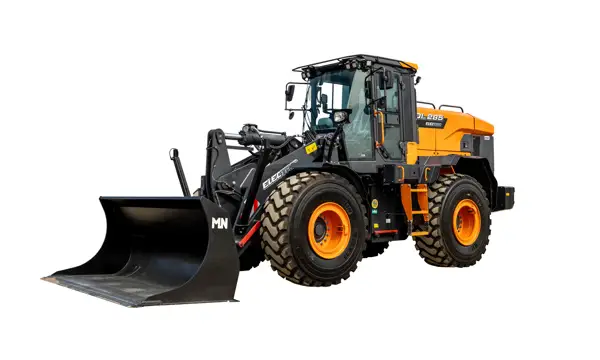In industries where heavy machinery is used (like construction, agriculture, infra, etc), we see legislation leading to frustration. The need to build and the need to become more sustainable are equally prominent, but entire building sites are shut down, because big machinery causes big emission (mainly CO2 & nitrogen) issues. The same emission issues arise in agriculture. This dilemma is expediting construction companies’ and farmers’ efforts to become more sustainable. One of the best (if not thé best) solutions for becoming more sustainable is electrifying the drive trains in heavy construction machines, like excavators, cranes, bulldozers, tractors and the like.
Build a sustainable world with intelligent machines
Industrial vehicles play a vital role in building our infrastructure. However, they often contribute to pollution and emissions due to their reliance on conventional fossil fuel-powered engines. In recent years, there has been a growing interest in electrifying the drive trains of these vehicles, offering several advantages in terms of environmental sustainability, cost-efficiency, and performance. On this page, we will explore the benefits of electrifying drive trains for heavy construction and agricultural vehicles and the technologies driving this transformative change. We will also demonstrate our relevant expertise in this area.


1. Environmental Sustainability
One of the primary motivations for electrifying heavy industrial vehicle drive trains is reducing greenhouse gas emissions. By replacing traditional internal combustion engines with electric motors, these vehicles can significantly decrease their carbon footprint and help combat climate change. Electric drive trains produce zero tailpipe emissions, resulting in improved air quality and reduced noise pollution at construction sites and farms.
2. Cost Efficiency
Electric drive trains can offer cost savings over the long term. Although the upfront investment may be higher, electric vehicles typically have lower operating and maintenance costs compared to their conventional counterparts. Electricity is generally cheaper than fossil fuels, and the maintenance requirements for electric drive trains are often simpler and less expensive. Additionally, the energy efficiency of electric motors can lead to reduced fuel consumption, further lowering operational expenses.
3. Improved Performance
Electrifying the drive trains of heavy industrial vehicles can lead to improved performance and productivity. Electric motors provide instant torque, offering better acceleration and power delivery compared to traditional engines. This enables vehicles to handle heavy loads and navigate challenging terrains more efficiently. Furthermore, electric drive trains have regenerative braking capabilities, meaning they can recover and store energy during deceleration or braking, increasing overall energy efficiency and extending battery life.
4. Noise Reduction
Conventional industrial vehicles with internal combustion engines can be noisy, causing disturbances in rural areas, residential areas or urban construction sites. By transitioning to electric drive trains, the noise levels can be significantly reduced. Electric motors operate quietly, making e.g. construction sites more pleasant for workers and nearby residents. This quieter operation also allows for better communication and increased safety on construction sites. On the farm, nature will obviously benefit greatly from less noice pollution.


Several key technologies are driving the electrification of drive trains for heavy industrial vehicles:
1. Battery Technology
Advancements in battery technology have been crucial in making electrification feasible for heavy industrial vehicles. High-capacity and durable batteries allow for extended operating range and can handle the demanding power requirements of construction equipment. Lithium-ion batteries, in particular, have become the industry standard due to their high energy density and improved efficiency.
2. Charging Infrastructure
The availability of a robust charging infrastructure is essential for widespread adoption of electric industrial vehicles. Charging stations need to be strategically located at construction sites, depots, and along transportation routes to ensure uninterrupted operation. Fast-charging technology is also being developed to minimize downtime and maximize productivity.
3. Vehicle-to-Grid Integration
Vehicle-to-grid (V2G) technology enables industrial vehicles to not only consume electricity but also feed excess power back into the grid. This bidirectional flow of energy can help stabilize the grid and support renewable energy integration. V2G capabilities can turn industrial vehicles into valuable energy resources, enhancing the overall sustainability of the electrical grid.
We deliver a total package, making it fun and easy for our clients to work with us. We are pragmatic and quick to deliver. Below, you find the most important areas of expertise we employ:
Click the expertise icons to learn more, or contact us directly!
The proof of the pudding is in the eating. Sure, we talk a big game, but we also back it up with results. Please view below some of the machines we electrified.
Your email address and personal data are 100% safe with us. It only takes a few seconds to sign up and if you don’t want to hear from us anymore, unsubscribing is just as easy. Promise!